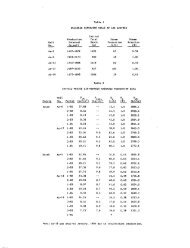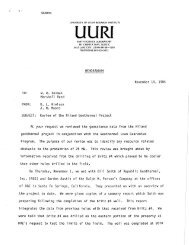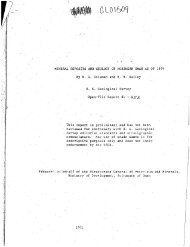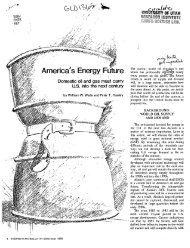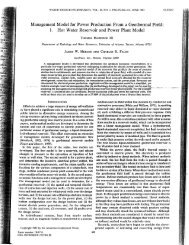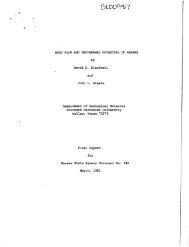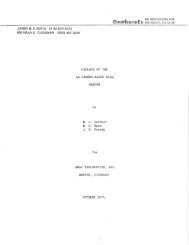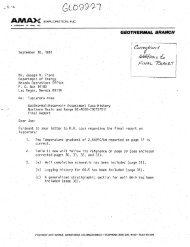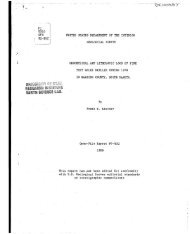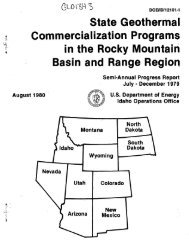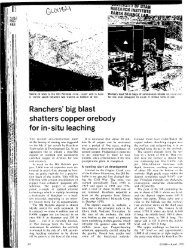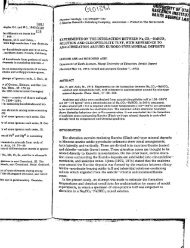"INDUCED POLARIZATION DATA AT ... - University of Utah
"INDUCED POLARIZATION DATA AT ... - University of Utah
"INDUCED POLARIZATION DATA AT ... - University of Utah
Create successful ePaper yourself
Turn your PDF publications into a flip-book with our unique Google optimized e-Paper software.
CHU<br />
modeled resistivity contrasts between stations 3 East and 18 West in<br />
Figure 8 coincide with the faults crossing Line 1 in Figure 10. The<br />
Opal Mound Fault is located at station 12 West along Line 1 (Figures 1,<br />
10, and 8).<br />
Soil sample analyses (Capuano and Bamford, 1978; Bamford et al,<br />
1980) indicate a possible fault passing through the area near well 72-16<br />
and station 6 West <strong>of</strong> Line 1 (Figure 10). The modeled resistivity data<br />
(Figure 8) also suggest a fault; the 300m dipole data show a contrast <strong>of</strong><br />
12 to 50n-m at station 6 West.<br />
Figure 9 shows the resistivity model for Line 2. The majority <strong>of</strong><br />
the computed resistivities were within 10% <strong>of</strong> the observed<br />
resistivities. The surface locations <strong>of</strong> the modeled resistivity<br />
contrasts marked IIfll correspond to faults crossi ng Line 2 in Figure<br />
10. Dashed lines in Figure 10 are inferred faults and correspond to the<br />
resistivity contrasts marked by II?II in Figure 9.<br />
Figures 8 and 9 show high resistivities on the eastern parts <strong>of</strong> the<br />
survey lines near the Mineral Mountains, with a transition to lower<br />
resistivities toward the west. The zones <strong>of</strong> low resistivity modeled in<br />
both lines over the geothermal system extend westward beneath more<br />
resistive material. A likely geological explanation for this is that<br />
brine is 1 eaki ng from the co nvect i ve hydrothermal system westward<br />
beneath the valley sediments. At station 39 <strong>of</strong> Line 2 in Figure g, the<br />
resistive over conductive regime changes to a conductive over resistive<br />
regime. We assessed the character and magnitude <strong>of</strong> phase shifts due to<br />
coupling over these two regimes by calculating the one-dimensional EM<br />
coupling for the dipole-dipole array (Hohmann, 1973). Figure 11 shows



